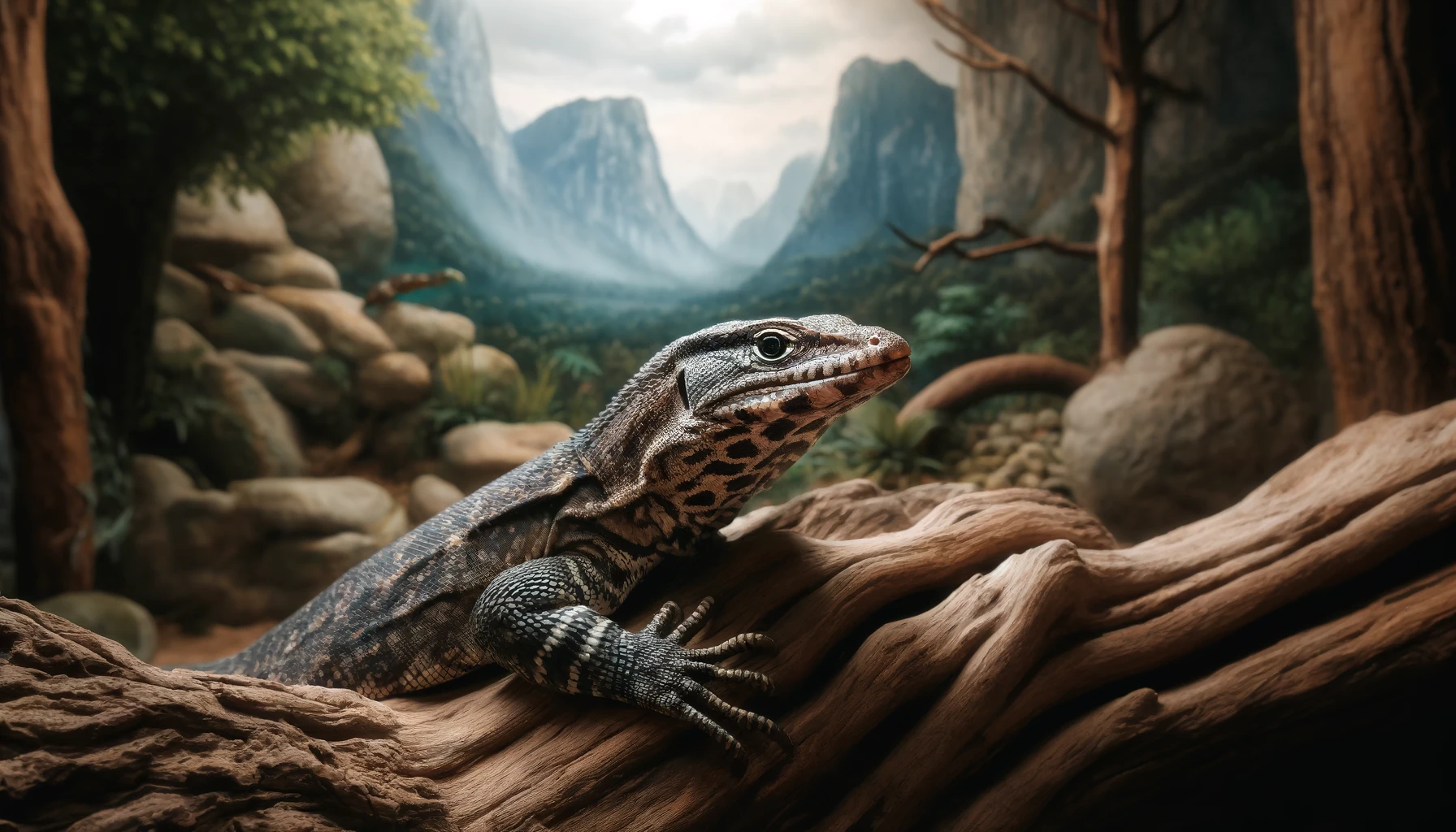
- This event has passed.
World Lizard Day
August 14

World Lizard Day, celebrated annually on August 14th, is a day dedicated to raising awareness and appreciation for these fascinating reptiles. Lizards, with their diversity in size, shape, color, and habitat, are found on every continent except Antarctica. This day offers an opportunity to learn about lizards, their role in ecosystems, and the challenges they face due to habitat loss, climate change, and other environmental threats.
Lizards are often overlooked in conservation efforts, but they play a crucial role in maintaining the balance of their ecosystems. World Lizard Day aims to bring attention to these often-misunderstood creatures, encouraging people to take action to protect their natural habitats and support conservation initiatives. Whether through education, conservation activities, or simply spending time appreciating the lizards in your local environment, this day serves as a reminder of the importance of all species in maintaining the health of our planet.
History and Meaning
The origins of World Lizard Day are somewhat obscure, with no specific organization or individual credited with its creation. However, the day has gained popularity over the years as environmentalists, herpetologists, and lizard enthusiasts have embraced it as a way to spotlight the importance of lizards in our world. Lizards have been around for millions of years, with their ancestors dating back to the age of the dinosaurs, making them one of the oldest surviving groups of reptiles.
The significance of World Lizard Day lies in its ability to educate the public about the diversity and ecological importance of lizards. With over 6,000 species of lizards worldwide, they inhabit a variety of ecosystems, from deserts to rainforests. These reptiles are crucial for controlling insect populations, serving as prey for larger animals, and contributing to the overall health of their habitats. By understanding the role lizards play, people can better appreciate the need to protect them and their environments.
Traditions and Rituals
World Lizard Day is celebrated in various ways around the world, with activities often centered on education and conservation. Zoos, nature centers, and wildlife organizations may host special events, such as lizard-themed exhibits, talks by herpetologists, and interactive sessions where visitors can learn about different species of lizards. Schools and educational institutions may also participate by organizing activities like lizard-themed art projects, science lessons, or field trips to observe lizards in their natural habitats.
At home, individuals can celebrate World Lizard Day by learning more about the lizards in their local area, creating lizard-friendly gardens, or even adopting a pet lizard if they are prepared for the responsibility. Many people use this day to share information about lizards on social media, raising awareness among their friends and followers. The key tradition of World Lizard Day is spreading knowledge and appreciation for these unique reptiles, encouraging others to recognize their value in the natural world.
Modern Celebration of the Day
Today, World Lizard Day is celebrated by a growing community of reptile enthusiasts, conservationists, and educators. The modern celebration of this day often involves a mix of educational outreach and hands-on conservation efforts. Social media platforms play a significant role in spreading awareness, with hashtags like #WorldLizardDay and #LizardConservation being used to share facts, photos, and stories about lizards. Online webinars and virtual tours of lizard habitats have also become popular, especially in recent years.
In addition to online activities, local events are organized in various communities, bringing people together to celebrate lizards. These events might include guided nature walks, lizard-watching excursions, and workshops on how to create lizard-friendly environments in your backyard. The modern celebration of World Lizard Day emphasizes the importance of community involvement in conservation efforts, as well as the role of technology in connecting people with the natural world.
10 Congratulations and Wishes
- “Happy World Lizard Day! May we all appreciate the beauty and importance of these incredible reptiles.”
- “Wishing you a fantastic World Lizard Day! Let’s celebrate the diversity and wonder of lizards everywhere.”
- “On this World Lizard Day, let’s pledge to protect and conserve these amazing creatures and their habitats.”
- “Happy World Lizard Day! Here’s to the fascinating world of lizards that enrich our planet in so many ways.”
- “Celebrate World Lizard Day by learning something new about these remarkable reptiles today!”
- “May World Lizard Day inspire you to discover the incredible diversity of lizards around the world.”
- “Happy World Lizard Day! Let’s work together to ensure a bright future for lizards and their ecosystems.”
- “Wishing you a lizard-tastic World Lizard Day filled with curiosity and appreciation for these unique creatures.”
- “On World Lizard Day, let’s take a moment to recognize the vital role lizards play in our ecosystems.”
- “Happy World Lizard Day! May your day be filled with the wonder and joy that lizards bring to our world.”
10 Unusual Facts
- The smallest lizard in the world is the dwarf gecko, which can be as tiny as 16 mm in length.
- Some species of lizards can detach their tails to escape predators, a process known as autotomy.
- The Komodo dragon, the largest lizard in the world, can grow up to 10 feet long and weigh over 150 pounds.
- Lizards use a variety of methods to communicate, including body language, vocalizations, and color changes.
- The basilisk lizard is known as the “Jesus Christ lizard” because it can run on water.
- Some lizards, like the chameleon, can change color to blend in with their surroundings or express their emotions.
- Lizards have a third eye on the top of their heads, known as the parietal eye, which helps them sense light and dark.
- The horned lizard can squirt blood from its eyes as a defense mechanism against predators.
- Some lizards, like the anole, can regenerate their tails if they are lost or damaged.
- The gila monster is one of the few venomous lizards in the world, using its venom to subdue prey.
10 Frequently Asked Questions (FAQs)
- What is World Lizard Day? World Lizard Day is an annual event celebrated on August 14th, dedicated to raising awareness about lizards and their importance in ecosystems.
- Why is World Lizard Day important? The day highlights the ecological significance of lizards, promotes conservation efforts, and educates the public about the threats facing these reptiles.
- How can I celebrate World Lizard Day? You can celebrate by learning more about lizards, participating in local or online events, creating a lizard-friendly environment, or spreading awareness on social media.
- Are lizards endangered? Some species of lizards are endangered due to habitat loss, climate change, and human activities. Conservation efforts are crucial to protect them.
- Can lizards be kept as pets? Yes, many species of lizards can be kept as pets, but they require specific care, including the right habitat, diet, and environment.
- What do lizards eat? Most lizards are insectivores, feeding on insects, but some species are herbivores or omnivores, eating a variety of plant and animal matter.
- How do lizards communicate? Lizards communicate through body language, color changes, and sometimes vocalizations, depending on the species.
- What is the largest lizard in the world? The Komodo dragon is the largest lizard, growing up to 10 feet long and weighing over 150 pounds.
- Can lizards regenerate lost body parts? Many lizards can regenerate their tails if they are lost or damaged, a process that helps them escape predators.
- Why are lizards important to the ecosystem? Lizards control insect populations, serve as prey for other animals, and contribute to the health of their habitats, making them vital for ecosystem balance.
Conclusion
World Lizard Day is a significant observance that brings attention to the importance of lizards in our world. These remarkable reptiles, with their incredible diversity and adaptability, play a crucial role in maintaining the balance of ecosystems across the globe. As we celebrate this day, it is essential to remember that the survival of many lizard species depends on our actions today. Conservation efforts, education, and community involvement are key to ensuring that future generations can continue to enjoy and learn from these fascinating creatures.
The importance of World Lizard Day extends beyond just a celebration of these reptiles. It serves as a reminder of the interconnectedness of all species and the role each plays in maintaining the health of our planet. By taking the time to learn about lizards and their habitats, we can better understand the broader environmental challenges we face and work together to create a more sustainable future.
Why This Day is Important
World Lizard Day is important because it highlights the often-overlooked role of lizards in our ecosystems. These creatures contribute to pest control, serve as prey for larger animals, and help maintain the balance of their environments. By raising awareness about lizards, we can also bring attention to broader conservation issues, such as habitat loss and climate change, which affect not only lizards but countless other species as well.
In addition, World Lizard Day provides an opportunity to engage the public in conservation efforts. Whether through education, community events, or personal actions, individuals can make a difference in protecting lizards and their habitats. The day serves as a call to action, encouraging people to take steps to preserve the natural world for future generations.
Author’s Opinion
As an advocate for wildlife conservation, I believe World Lizard Day is a vital reminder of the importance of all species, no matter how small or overlooked they may be.
Lizards, with their incredible diversity and adaptability, are a testament to the resilience of nature. However, they also face significant threats from human activities, making it crucial for us to take action to protect them.
In my opinion, World Lizard Day should be more than just a day of celebration. It should inspire us to learn, act, and advocate for the protection of lizards and their habitats. By doing so, we not only preserve these fascinating creatures but also contribute to the health and stability of our planet’s ecosystems. Let us use this day as an opportunity to reflect on our role in conservation and commit to making a positive impact on the world around us.
Details
- Date:
- August 14
- Event Tags:
- EcosystemBalance, EnvironmentalEducation, HabitatPreservation, LizardDay, LizardFacts, LizardLovers, NatureAwareness, ReptileConservation, WildlifeProtection, WorldLizardDay




